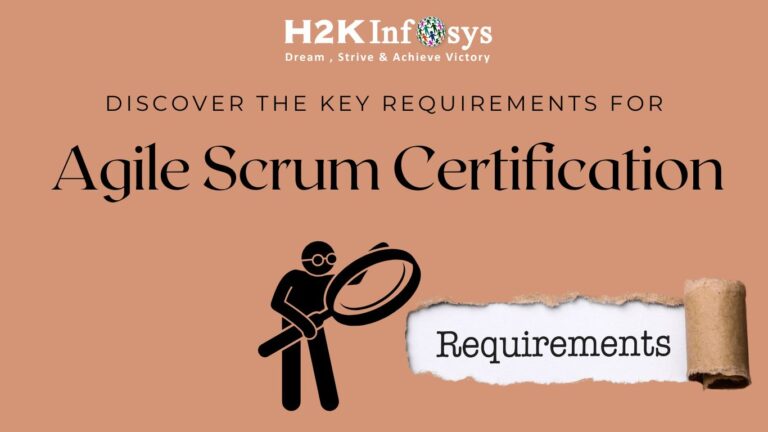A professional that feels at ease working with all software layers is known as a full-stack QA engineer. They are comfortable with different QA approaches and testing kinds. They can perform both manual and automated testing, and they are quite knowledgeable about how software functions. A versatile QA engineer needs to have a variety of skills, including in-depth knowledge of the web, mobile, and desktop testing; proficient processing and creation of technical documentation; comprehension of client-server architecture; proficiency in testing paradigms like BDD (behaviour-driven development); knowledge of DB and SQL; and familiarity with various AT tools and frameworks. You can learn more about Full stack QA engineers by checking out the QA training courses.
To put this skill set to use in practice, current QA procedures must be improved. Therefore, having a full-stack quality assurance specialist work on a project results in the following values:
Flexibility: one person in charge of a variety of duties. Given that this individual is informed about numerous aspects of the software, team collaboration is made simpler. Another benefit is improved insight generation. A more complete understanding of development processes can aid in enhancing and optimising present procedures and methods.
Efficiency: Automated testing is a usual next step in software development because of its efficiency. A specialist who is knowledgeable about both manual and automated QA can set AT more quickly and precisely. A full-stack QA engineer can also quicken the onboarding procedure. Particularly because this expert can instruct the newcomers on the fundamentals of the program and show them how to both manually test it and set up test automation, the introduction of a new team member becomes faster and simpler.
Quality: Better testing is possible thanks to the cooperation of automation and manual testing. Many false positives in automated results are eliminated by a manual QA professional evaluating AT. A full-stack QA engineer can also assist in developing a trustworthy test strategy for an application that is still being developed. In particular, by determining the tests that should be automated first and executing manual testing.
The classic black box tester is the antithesis of a full-stack quality engineer (also known as a tester). On the other hand, a Full Stack Tester adds value to the business by providing quick feedback loops on every technical process layer. By automating the testing processes for each layer, full-stack testers can deliver information about the program quality more quickly. They are culturally acclimated, cooperative, responsive, and culturally fit in as an agile team member.
Professionals or nerds with knowledge of operating systems, databases, web servers, server-side code, browsers, and client-side code are known as full-stack qualified experts (Full Stack QEs). The tester can provide swiftly and effectively because of these abilities and flexibility.
Full Stack Testers also specialise in automated testing using a variety of technologies, such as Tosca, Selenium, and others examples. Therefore, it is very common in this chapter to have some background knowledge in programming languages like Java.
Instead, they concentrate on improving the software’s quality. Defect detection was given less importance than defect prevention.
There is a misconception that QA engineers are much less technically skilled than developers and are mostly focused on manual testing of whatever the developer hands them. In contrast to actively searching for flaws during the planning, design, and development phases, this myth portrays testers as being mostly reactive, seeking faults in work that has already been completed by the developers.
This may have had some validity when we were still mostly using waterfall development methods, but in today’s agile and DevOps environments, this perspective is out of date and unreliable. You are almost certainly going to work alongside full-stack QA engineers in a modern firm.
A full-stack developer is proficient in all of the technologies used from the back end to the front end of an application, including each layer. A full-stack QA engineer is a QA engineer who works on all elements of quality and uses a variety of testing techniques to test their application. The functionality of the program will be largely recognizable to a full-stack QA engineer, who will feel at ease working across all of its layers. They’ll consider a wide range of factors affecting product quality, including functionality, usability, performance, security, globalisation, and so forth. They will be knowledgeable about test automation techniques and tools. The full-stack QA engineer possesses a wealth of technical, testing, and domain knowledge, all from a user-oriented perspective.
Why we need full-stack QA engineers
The adoption of agile product development methodologies is the main driver of full-stack QA. QA engineers have less time to finish all the testing when software updates come out more often. As a sprint comes to an end, there won’t be much time left, and it will be too late to do it months after the feature’s development is ‘complete’ (can it be complete if testing isn’t done?!)
Therefore, testing efforts must be integrated with the agile process and the sprint’s tasks in order to meet the goal of quick delivery. In other words, testing happens during each sprint rather than just once before release. From the beginning of the project, the QA engineer must consider all areas of quality and how to test.
To keep up with new technologies, testing methodologies, and testing approaches, QA engineers must develop their expertise. An accomplished QA engineer can fetch a higher income, experience job satisfaction, and have a successful career.
What full-stack QA engineers do
A full-stack QA engineer must be knowledgeable about the product and be able to test it from the perspective of the user. They ought to be involved from the beginning of the feature’s creation onward in order to contribute their suggestions and experience from the testing and user perspectives. If the QA engineer is involved from the beginning, which includes specifying the requirements for the feature, fewer faults are introduced by developers.
It’s important to view features from a feature-level viewpoint; just because none of the user stories have flaws doesn’t guarantee that the feature functions correctly overall. QA should participate in the feature’s early development to comprehend and shape the end-to-end flow and develop the usage scenarios that will be supported by the feature. The full-stack QA engineer will test the user stories and features after they are finished and make sure the flow is accurate.
The full-stack QA engineer is concerned with the usability of the product and has to understand how users use it. Additionally, security testing is crucial since it affects the availability of the application as well as applications that store private or sensitive data. The QA engineer must assess the program from a security perspective in order to ensure that the application’s services are prepared for us and accessible to authorised users whenever they need them. Additionally, the full-stack engineer will be an adept performance tester because many of today’s programs are sophisticated web applications that may be used by millions of users continuously.
The full-stack QA engineer will collaborate with the developers to comprehend the architecture, implementation, and technologies of a feature. They can use this to decide how to test the feature most effectively. Think about auto-complete on a selection list, for instance. The QA engineer will think about things like how long it takes for the selection to refresh after inputting a single letter, how to test an event that causes a REST call to the backend service, how the UI layer responds to a malfunctioning backend service, etc. Although the full-stack engineer does not need to be familiar with the application’s source code, having a thorough understanding of its implementation might lead to some extremely useful technical queries. This enables the team as a whole to implement the feature more carefully and stop bugs from reaching the end user. fault avoidance over fault discovery is the main focus of testing.
Engineers in full-stack QA must consider test efficiency. For testing to be repeatable, automation investment is essential. Both the tests themselves and the data or environment preparation, which takes time and is prone to error when done manually, may and should be automated. The engineer will create efficient test cases that maximise coverage using their knowledge of the feature’s architecture. A new feature, for instance, might have a browser-based user interface and a REST-based API to access the back end of a normal Model-View-Controller web application.
Before it is integrated with the user interface, the QA engineer can test the API layer. Similarly to this, testing an application through its API is quicker and more efficient than testing it through its user interface. This is because testing through the API is quicker and makes it simpler to validate the data it returns. Resilient because APIs tend to change less frequently than the user interface. The full-stack QA engineer will think about the optimum automation plan while still performing some user interface automation.
Organisations involved in software development must develop and support full-stack QA engineers. A tester’s impact on the direction and quality of the product will grow as they develop the abilities of a full-stack QA engineer. A skilled full-stack QA engineer also has expertise in products, offers quality advice, and analyses risks.
Developing your whole stack testing skills:
- Continuous Learning: Conferences, Reading, and Sharing
- Continuous Practice – Master skills
- Continuous improvement is reviewing your procedures, practices, and solutions at predetermined intervals.
Conclusion
Just being technically proficient is not enough. Having an understanding of the necessity of continuous delivery, continuous integration, and continuous testing. Technical knowledge is easily acquired, but adopting a new mindset and taking ownership is challenging. You can check out the QA certification course to learn more about Full stack QA engineers.






























